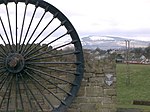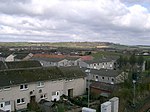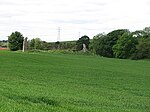Cardenden railway station

Cardenden railway station is a railway station in Cardenden, Fife, Scotland. The station is managed by ScotRail and is on the Fife Circle Line, 27 miles (43 km) north of Edinburgh Waverley. It opened to traffic in 1848, on the Dunfermline Branch of the Edinburgh and Northern Railway. The station is situated on Station Road, between the Bowhill and Dundonald areas. It can be accessed from the street by ramps or stairs. A footbridge connects the platforms. The station is unmanned and there are no ticket vending facilities. Passengers boarding here must buy their tickets from staff on the train. There is a small car park. The nearest public phone is at Bowhill Club, a short walk from the station. There are bus stops on Station Road. The station has recently been upgraded with new platforms and a signage system giving accurate train times. A CCTV system covers the station and is operated by ScotRail. Cardenden was the terminus for train services until the line to Thornton re-opened in May 1989 allowing the "Fife Circle Line" to operate. During the 1970s and early 1980s, the station was only served during the morning & early evening peak (trains outside these times starting/terminating at Cowdenbeath).
Excerpt from the Wikipedia article Cardenden railway station (License: CC BY-SA 3.0, Authors, Images).Cardenden railway station
Denfield Avenue,
Geographical coordinates (GPS) Address Nearby Places Show on map
Geographical coordinates (GPS)
| Latitude | Longitude |
|---|---|
| N 56.1411 ° | E -3.2609 ° |
Address
Denfield Avenue
KY5 0BU
Scotland, United Kingdom
Open on Google Maps







